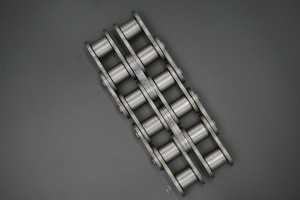Welding speed of roller chain
Introduction
As a mechanical element widely used in industrial transmission and conveying systems, the welding speed of roller chain is one of the key factors affecting production efficiency and product quality. The welding speed not only determines the production cycle, but also directly affects the welding quality and the mechanical properties of the chain.
1. Basic concept of roller chain welding speed
Welding speed refers to the speed at which the welding rod or welding gun moves along the welding direction during welding. In the production of roller chains, the welding speed is usually measured in millimeters per second (mm/s) or centimeters per second (cm/s). The selection of welding speed requires comprehensive consideration of material properties, welding process, equipment performance, and product quality requirements.
2. Factors affecting the welding speed of roller chains
(I) Material properties
Roller chains are usually made of medium carbon steel or alloy steel. The thermal conductivity and melting point of these materials have a significant effect on the welding speed. For example, materials with high thermal conductivity require higher welding speeds to prevent overheating. In addition, the thickness of the material also affects the welding speed. Thicker materials usually require lower welding speeds to ensure weld quality.
(II) Welding process
Common roller chain welding processes include manual arc welding, gas shielded welding and automatic welding. Different welding processes have different requirements for welding speed. For example, automatic welding can usually achieve higher welding speeds due to its high degree of automation and precision.
(III) Equipment performance
The performance of welding equipment, such as welding current, voltage and shielding gas flow, directly affects the welding speed. Advanced welding equipment can provide more stable welding parameters, thereby increasing the welding speed.
(IV) Product quality requirements
The selection of welding speed also needs to consider product quality requirements. Too fast welding speed may cause weld defects such as lack of fusion, pores and cracks, while too slow welding speed will reduce production efficiency.
3. Optimization strategy for roller chain welding speed
(I) Select the appropriate welding process
Select the most suitable welding process according to the production requirements and material properties of the roller chain. For example, for mass production, automatic welding is an ideal choice to improve welding speed and quality.
(II) Adjust welding parameters
Optimize parameters such as welding current, voltage and shielding gas flow to achieve the best welding speed and quality. For example, appropriately increasing the welding current can increase the welding speed, but it is necessary to ensure the quality of the weld and the heat-affected zone of the material.
(III) Use advanced welding equipment
Adopting advanced welding equipment, such as laser welding machine or plasma welding machine, can significantly improve the welding speed and quality.
(IV) Strengthen quality control
Establish a strict quality control system, regularly check welding equipment and process parameters, and ensure the stability of welding speed and quality.
4. Application examples of roller chain welding speed
(I) Automobile manufacturing
In automobile manufacturing, roller chains are used in the transmission system of engines and transmissions. The selection of welding speed needs to ensure the reliability and durability of the chain under high temperature and high load conditions.
(II) Conveying system
In the conveying system, roller chains are used for material transmission. The selection of welding speed needs to consider the wear resistance and fatigue resistance of the chain.
(III) Agricultural machinery
In agricultural machinery, roller chains are used for drive and conveying systems. The selection of welding speed needs to ensure the reliability and durability of the chain in harsh environments.
5. Conclusion
The welding speed of roller chain is a key factor affecting production efficiency and product quality. By selecting appropriate welding process, adjusting welding parameters, using advanced welding equipment and strengthening quality control, the welding speed and quality can be effectively improved. In practical applications, it is necessary to comprehensively consider the selection of welding speed according to specific needs and material properties to achieve the best production efficiency and product quality.
Post time: Jul-28-2025

